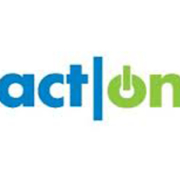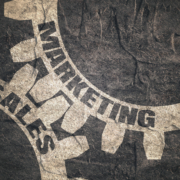Good Qualification is Vital
One of the critical drivers for revenue success is an increase in close rates by the sales team and effective qualification is critical to that metric. Not only will effective qualification help the sales team focus on the right deals, the very exercise of qualification inspires better engagement tactics in the sale.
Because of the self-directed buyer and the ability to measure engagement levels online, today’s qualification process is collaborative across marketing and sales. BANT, SCOTSMAN, TAS and our own FACT model help with both sales and marketing qualification and should be configured in lead scoring qualification and identifying qualified leads including the MQL – marketing qualified lead and SQL – sales qualified leads or opportunities.
1. BANT Qualification
BANT is likely the most well-known model in the B2B sales arena. I learned BANT while at IBM, and I use it often as most salespeople remember it, and it is short and easy to use. A short acronym quickly helps focus the mind around four critical elements. Lead scoring models in marketing automation can use a BANT to facilitate lead scoring. The primary insight around lead quality will be developed in the sales process. BANT is the primary standard for B2B, the problem with BANT is that it is more confrontational. It is one-sided toward the seller.
Budget
- Is a budget available for the project?
- If no budget, will budget be provided
- No budget
Authority
- What is the contact’s title?
- Are they a decision maker?
- Are they an influencer?
Need
- What problem are they trying to solve?
- Are they just researching?, job seekers? Are they trying to sell YOU something?
- Understand buyer needs and pain points.
Timeframe
- When do they want to make a purchase decision?
- Is there a compelling event?
TAS Qualification
I really like TAS qualification. It centers on four simple questions: Is there an opportunity? Can we compete? Can we win? Is it worth winning? We adopted the TAS program at Viant and standardized it into our sales operating model.
The TAS model is also easy to remember and deals strategically with the go/ no go business decision. The last question – “Is it worth winning?” is particularly powerful because so often a deal can appear winable, but with a thoughtful approach, it still may not be worth pursuing. TAS is a great model and easy to remember. It asks the important question, “Is it worth winning?” which others do not. However, TAS, like BANT, is all about us, not a collaborative qualification approach.
Is there an opportunity?
- Defined project
- Business profile/ situation
- Financial condition
- Access to funds
- Compelling event/ Implementation date
Can we Compete?
- Formal decision criteria
- Solution fit
- Resource requirements for bid
- Current relationship strong
- Unique business value
Can we win?
- Inside support strong
- Executive credibility strong
- Cultural compatibility good
- Informal decision criteria
- Political alignment strong
Is it Worth Winning?
- Short term revenue
- Future revenue
- Profitability
- Degree of risk
- Strategic value
SCOTSMAN Qualification
I learned SCOTSMAN while at the PA Consulting Group. At PA there were plenty of real Scotsman! It was the PA standard model we used in global sales training programs – and a very popular model. SCOTSMAN uses more elements and it provide rich insight about a deal. For particularly complex relationships and sales situations, SCOTSMAN is a good choice. However, I find it difficult to remember without using a “cheat sheet” or spreadsheet to work through the analysis!
Here is how the model works:
Solution
- Do they like our solution?
- Are we bidding on a new service?
Competition
- Are too many firms bidding?
- Does the prospect express a negative bias?
- Does the competition have any significant advantage?
Originality
- Has the prospect committed our USPs to his selection criteria?
- Has the prospect committed time to examine our strengths?
Time Scales
- Has the prospect accepted our timescales?
- Are the prospect’s plans realistic?
- Is the decision or implementation too far away to be worthwhile?
Size
- Is the job or account potential big enough?
- Will the job demand more resources than we can offer?
Money
- Are the fees within the prospect’s budget?
- Is the budget realistic?
- Are we much more expensive than the competition?
Authority
- Are we talking/can we talk to the decision makers?
- Do the decision-makers know that there is a decision to be made ?
- Do we have a bad history/rapport with the decision-makers?
- Are consultants involved in the decision?
- Do we have an inside salesperson?
Need
- Have we agreed the (business) case for the engagement?
- Have we agreed to a decision timetable with the prospect?
FACT Qualification
FACT stands for Fit—Alignment—Competition—Timeline. We developed FACT to enable a more collaborative process between the sales team and the client. FACT views qualification as a two-way concept between the buyer and the seller. It uses similar elements to BANT and TAS, but it adopts a more collaborative, non-confrontational style.
Fit: (Are we a mutual fit?)
- Is the client within our target segments where we bring the greatest value?
- Does the budget range fit the work, and is it comfortable for both parties?
- Does the buyer perceive value in the relationship and solutions offered?
Alignment: (Are we aligned on the buy-sell process?)
- Is the buying criteria aligned with our solution value proposition?
- Are decision-makers engaging in a collaborative process?
- Are there too many firms bidding?
Competition: (Is there a path to a win-win opportunity?)
- Do competitors offer any significant advantage based on the buying criteria?
- Does the prospect express a negative bias toward our company or people?
- Do we have any unique competitive advantage?
Timeline: (Does the implementation timeline work for both parties?)
- Are the prospect’s plans and timelines realistic for a successful outcome?
- Is there a compelling event driving the decision and can we can deliver?
- Will the buy-sell process demand more resources than we effectively manage?
Each of these models is part of an effective sales operating model. We help clients define operating models that work in their specific environment. A sales operating model defines key elements of the sales responsibility, including;
- Pipeline stages and rules
- Usage criteria for CRM and Sales Force Automation tools
- Forecasting Models
- Assets for team sales, qualification, and selling
- Assets required at different stages of the sales process
We have a range of tools to assist in the qualification process. If you would like to learn more about how we help deploy marketing and sales processes that use these methods, or if you would like to get a copy of the spreadsheet qualification tool, contact me. Good luck and good selling!





Leave a Reply
Want to join the discussion?Feel free to contribute!